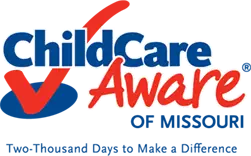Our Best CDA in Child Care Tips
 Lots of child care professionals want to pursue their CDA in child care. If you’re not aware, CDA stands for Child Development Associate credential. Earning a CDA in child care is a big deal. It signals to your peers and potential employers that you’re serious about your chosen profession.
Lots of child care professionals want to pursue their CDA in child care. If you’re not aware, CDA stands for Child Development Associate credential. Earning a CDA in child care is a big deal. It signals to your peers and potential employers that you’re serious about your chosen profession.
Earning the credential involves a lot of steps. You need training hours, an observation, a portfolio, and to pass an exam. All told, that’s quite a bit of effort on your part. That’s why you’ll need all the help you can get. We’ve broken our tips into sections accordingly: One for the training requirement, one for the exam, and one to guide you through the verification visit by a Professional Development specialist. We’ll go over everything you need to do to get your CDA application in order at each of these stages.
While you shouldn’t get all of your information about your CDA application from one little blog post, we should be able to give you a great jumping off point for completing your CDA in child care. So, let’s get into it. We’ll start with the required training hours.
Tips for your CDA Child Care Training Hours
This is unquestionably the biggest part of the CDA credential, and it’s one of the tallest hurdles you need to get over for your CDA application. As such, you might think you need the most help to get it done. We’ve got some great advice to help you accomplish this feat.
Take a CDA child care specific course.
One part is choosing the right training. A key component of a CDA in child care is the 120 hours of training across eight fields that’s required. A crucial distinction — the requirement is 120 total hours with 10 hours in each of the eight CDA child care subject areas. Those are:
- Planning a safe and healthy learning environment
- Advancing children’s physical and intellectual development
- Supporting children’s social and emotional development
- Building productive relationships with families
- Managing an effective program operation
- Maintaining a commitment to professionalism
- Observing and recording children’s behavior
- Understanding the principles of child development and learning
There are a lot of different CDA child care courses out there. If you choose to opt for one, make sure it will cover all of those areas adequately. Also be sure to collect proof that you completed those training hours — if the program offers a certificate of completion or other documentation, make sure you hold onto it. You’ll need it for your portfolio.
Get your training done before submitting your CDA application.
Once you turn in your CDA application to the Council, you’ve only got six months to complete all of the requirements and earn your credential. So, it’s a good idea to get what you can out of the way before the clock starts. Your 120 training hours are one of those things to knock out before you ever submit that initial application. It’s also great to do because if you start with a CDA child care course, you’ll have a lot of resources to help you through the rest of the process.
Make sure you have the right resources.
In addition to courses to fulfill your training requirements, you can also purchase books that will help you through the process. The right kinds of guides will offer a lot more help than we ever could in a little blog post. However, you don’t want to overdo it. If you’re participating in a comprehensive course that covers all aspects of your CDA application, then you should have the right resources to find success.
Tips for your CDA Child Care Exam
Testing anxiety is a real concern. For people who struggle with that, this component of your CDA in child care is going to be the most distressing. With the right preparation, though, you can definitely ace this test. Here, we’ve got you covered with some advice going into your CDA child care exam.
Brush up on your multiple choice skills.
All of the questions on the CDA child care exam are multiple choice. So, you should go back to the basics of optimizing any multiple choice test. Definitely try your best to answer every question, even if you have to guess (incomplete questions are marked as wrong). Eliminate options that are clearly wrong and try to pick the best one from the remaining answers. Go back over any questions that you’re not sure about if you have time at the end of the test.
Know what they’re going to be asking.
Most of the questions are situational, which means you’ll be asked to pick the option that most closely resembles how you would respond to the given situation. While you won’t be able to know the exact questions that will be on your exam, you should be able to get a general idea of the kinds of questions from taking practice tests. There are plenty of resources for those. If you’ve got a good idea of what sorts of situations and quandaries they’ll pose, then your CDA application is more likely to be successful. It’s basic studying, so fall back on what worked for you in school.
Tips for your CDA Child Care Verification Visit
This can be one of the most nerve-wracking parts of the process following your CDA application, especially if you’re not too bothered about taking the exam. The Professional Development specialist you select will come to your place of work for about four hours. The first hour will be spent reviewing your portfolio, followed by two hours of observing you at work. Then, their visit finishes with an hour sitting down with you and discussing various relevant things (we’ll go over what they’ll want to talk to you about in more detail later). Those are the basic steps in the CDA child care verification visit process, but we have some more specifics about what they’re looking for. Here are our tips.
Make sure you’re signed up for the right kind of CDA.
This might sound too obvious, but in a field this complex, it’s easy for little things to slip through the cracks, and discrepancies do sometimes occur between your CDA application and what’s on your competency standards booklet. You should have the opportunity to fix it before your verification visit, and take that opportunity if you need to. Your PD specialist should be able to help you make the proper arrangements to get you signed up for the right setting. The verification visit can’t go forward if you’re not signed up for the right kind of setting.
Complete your portfolio before you have your verification visit.
While it is possible for your PD specialist to continue their visit without a completed portfolio on your part, you’re going to get docked for that. You’re also wasting the valuable time you have to spend with an expert in your field. We’ll talk a little bit more about the relationship between you and your PD specialist later, but for now, just keep in mind that you have an hour to speak with a qualified professional about your strengths, weaknesses, and goals as a child care worker.
Make sure your portfolio reflects you.
It’s possible that you might need to be in a room that’s not yours for your observation. Maybe you’re normally the secondary teacher, or maybe there are staffing issues going on that day. Whatever the reason, you might not be on your home turf for your observation. That can be stressful. Part of what the PD specialist judges your CDA application on is the environment: Are cleaning supplies locked away? Are the books age-appropriate? Those kinds of considerations are very important. But when you’re in a room that’s not your own, you might not be in control of those things.
If you’re concerned about this, making sure the portfolio element of your CDA application accurately reflects you is a way you can get across anything you don’t get to during your observation time, whether that’s because you’re not in your own environment or simply due to time constraints.
Be prepared.
One of the reassuring things about the PD specialist’s visit is that you know exactly when it’s going to happen. Since the visit won’t be a surprise, you can tailor the activities for that day around what the PD specialist is looking for. You can find all of those guidelines in the back of your competency standards booklet. They’ll take those exact pages to guide their observations, so you’ve got all the important information at your fingertips. So, take a look at those, and try to plan out your day around what they’re expecting to see.
Don’t talk to the PD specialist during the observation period.
You’ll probably be a little nervous about an expert watching you work. It’s not every day that someone’s evaluating you! It’s totally normal to be nervous about the fate of your CDA application, but try not to ask the PD specialist for reassurance while they’re observing you. It’s generally best to just go about your job like you normally would. You’ll have time to chat with them during the reflection period after the observation.
Collect as many family questionnaires as you can.
Part of the portfolio that you’ll present to your PD specialist is an overview of some questionnaires filled out by families who send their children to your place of work. PD specialists don’t read the family questionnaires, but they do count how many you get back in comparison to how many you sent out. You need to collect more than half of what you distribute and then condense what they’ve said into the appropriate forms.
Make it clear how the pandemic changes things
The current situation regarding COVID-19 means that not everything in your child care environment will be ideal. For social distancing reasons, you might have certain toys assigned to each child or other special considerations that would otherwise be unreasonable. As long as you communicate this during your interview time, your PD specialist should be understanding.
See your PD specialist as a mentor rather than a disciplinarian.
The PD specialist observing you isn’t trying to dock points just for fun. They’re there to ensure that you’re practicing everything that you’ve put into words in your portfolio. We already mentioned that at the end of their visit, they’ll sit down with you for an hour-long discussion about what they saw and what you wrote in your portfolio. If they didn’t get a chance to see part of your daily routine due to the time of day of the observation, then they’ll ask you about the typical procedure or how you incorporate those elements into your work.
This reflection period and interview isn’t another exam. Yes, you’re being judged, but it’s all in an effort to make you a better child care professional. Make the most of the time you have with an expert in your field who wants to see you succeed.
The biggest tip: Don’t go it alone.
The biggest piece of advice we can give you about your CDA application is to find resources to help you with it. This blog post is a great place to start with your CDA child care instruction needs, but it’s definitely not the last place you should go. You’ll benefit from whatever support you can get.
As we discussed in the first section, taking a CDA child care course is a great way to get that initial help. Not only will that take you through the 120 hours of required training and all of the important subject areas, but it will also give you access to more resources to get your CDA application filled out properly.
If you need any further help with anything child care related, don’t be afraid to reach out to us here at Child Care Aware® of Missouri. We’ve got plenty of resources for parents and child care professionals alike, and we’re happy to try to point you in the right direction if you need something we don’t provide. Best of luck with your CDA application!











